Looking for the right online course platform?
The eLearning industry is on pace to reach $325 billion by the year 2025.
For businesses, building an online course is a surefire way to cement your authority as a helpful provider of useful information in your niche. And for aspiring thought leaders, solopreneurs and educators, it gives them the opportunity to monetize their expertise in the online space.
In this post, we will compare three of the biggest online course platforms in the market today: Kajabi, Thinkific, and Teachable.
Let’s get started.
What’s Easier to Use?
Given that you’re likely building a new elearning hub from scratch, the learning curve of your online course platform is a key consideration.
It’s true that most self-service tools, be it a website builder, e-commerce software, or online course platform, are more user-friendly than ever. Still, convoluted interfaces and a lack of available support resources could waste hours of your productivity.
Luckily, all of the platforms we’ll look at today clearly have usability at the top of their priorities. They all feature a clean dashboard where you are well-assisted by tutorial elements and notifications.
Kajabi
Right off the bat, Kajabi’s streamlined interface provides a marginally better experience than the others.
The navigation menu is more organized, the overview page looks a lot simpler, and the Kajabi Assistant keeps every feature within reach.

Teachable
Although Teachable’s Search feature is not as robust as Kajabi Assistant, it still helps users get to where they need to go.
The Teachable dashboard is also easy to use and is well organized. It kickstarts your experience with tutorials and a handful of tips to help you get accustomed to the site’s interface.

Thinkific
In terms of simplicity, Thinkific’s interface definitely delivers. It features a minimalistic navigation menu and immediately presents you with tasks to help you get your online course website up and running.
Similar to Teachable, new users may also rely on the built-in search feature to get around.
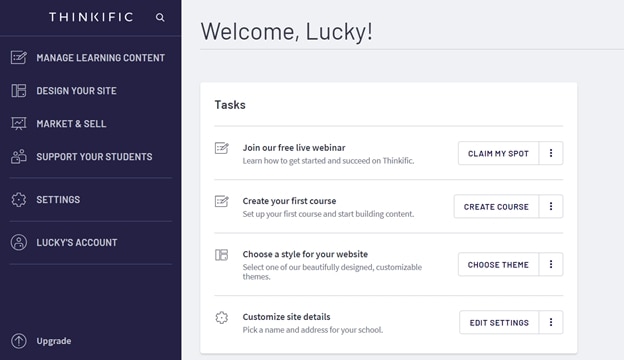
Creating Your Online Courses
While the dashboard interface is important, it’s really just a small part of the experience.
What matters most is the flow of the online course creation process, which varies from platform to platform.
Kajabi
In Kajabi, online course materials are structured with helpful preset “Product Blueprints.”
- Mini Course
As the name suggests, a Mini Course is a one-off product that focuses on one particular topic.
- Online Course
The Online Course product is a more comprehensive online learning experience that has content spread over multiple categories.
- Evergreen Training
If you’re planning to offer a learning program wherein lessons are published every week or so, then the Evergreen Training product blueprint is the one to use.
- Membership
As the name suggests, a Membership product is a flexible online course blueprint that requires a subscription.
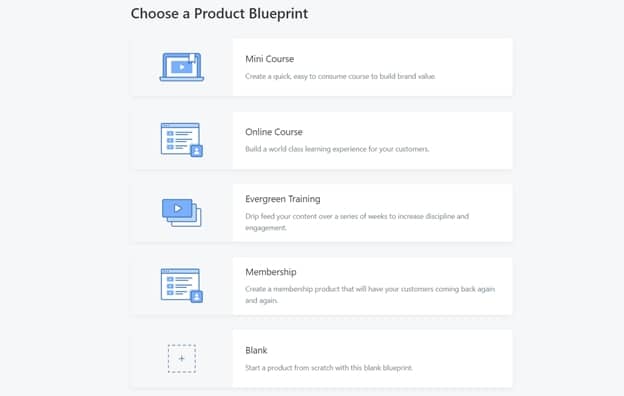
When building your online course, Kajabi features a drag-and-drop builder that takes no time to learn.
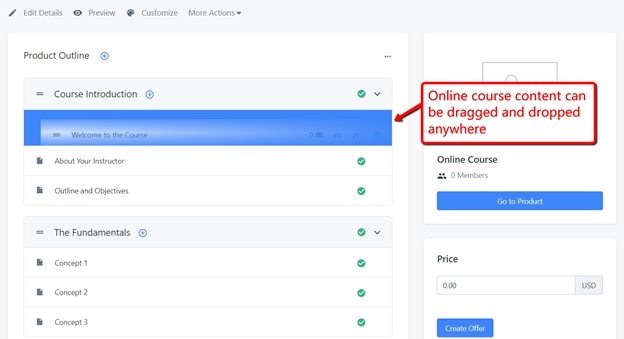
Course content, on the other hand, may take the form of an assessment or a typical video lesson with text-based details, downloadables, comments and so on. You can also create automated events that trigger when certain conditions are met, such as failing an assessment, opening an email, and using coupon codes.
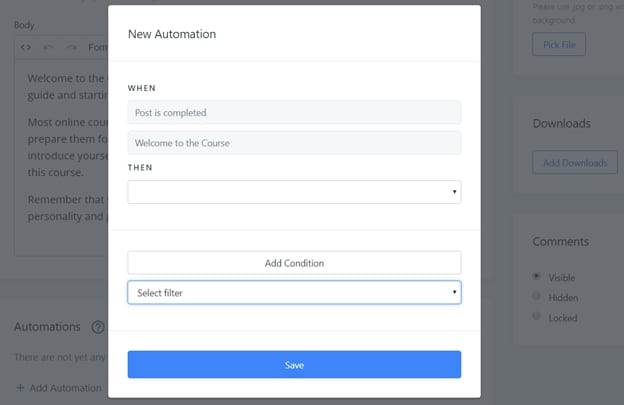
Teachable
Unlike Kajabi, Teachable offers a “from scratch” course creation process. It doesn’t feature any online course templates that will help you save time — rather, it puts you right in the middle of the action with a drag-and-drop curriculum editor.

For content development, Teachable lets you create a mashup of learning materials, text, quizzes, and custom code.
While this is great for flexibility’s sake, it leaves users solely responsible for planning and outlining their courses. But then again, some may actually prefer being given complete freedom no matter how time-consuming the activity gets.
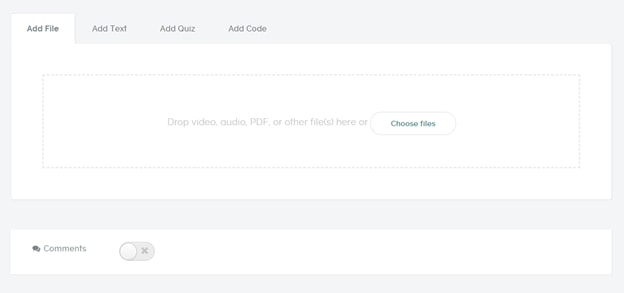
Thinkific
Similar to Kajabi, Thinkific has multiple templates you can use to quickly establish your online course’s structure.
Since Thinkific’s Mini Course and Flagship Course templates are virtually the same as Kajabi’s Mini Course and Online Course blueprints, we’ll just take a look at the templates that are unique to Thinkific.
- Pre-Sell
The Pre-Sell online course template lets you create a landing page where users can pre-register for your course. This is a great way to gauge the interest in certain topics.
- Digital Download
It may not exactly be an online course, but with the Digital Download template, you can freely host downloadable content on your Thinkific account for lead generation or additional sales.
- Membership Resource Library
Like the Digital Download template, the Membership Resource Library allows you to host downloadable resources to supplement the value of other courses.
- Webinar Replay
Lastly, Thinkific allows you to host your own webinar within the platform, record it, and make it available to your students.
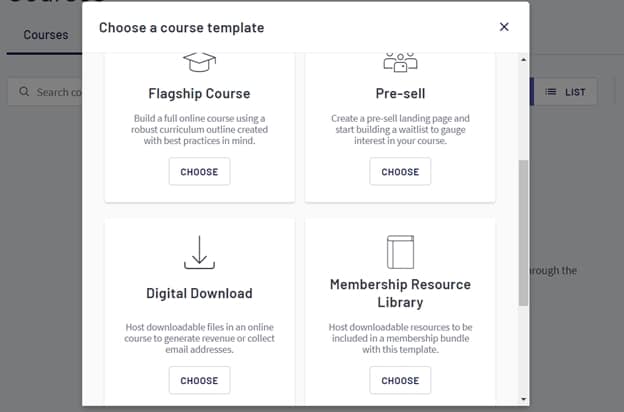
It’s worth noting that both Kajabi and Teachable offer presale and webinar solutions. These platforms simply don’t package these features as course templates, which is what Thinkific does.
As for content creation, Thinkific also utilizes a visual curriculum editor. It may take some time to get used to, but when you do, you’ll realize that it’s actually quite a powerful platform.
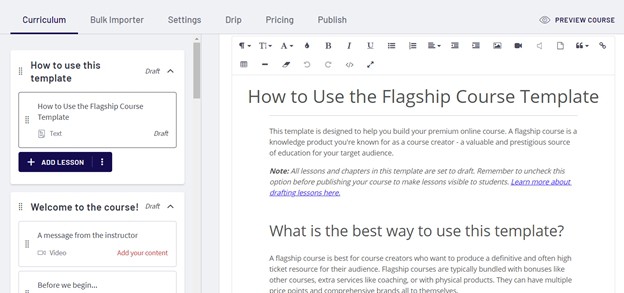
Other Noteworthy Differences
Usability aside, there are several differences that set these platforms apart.
Do note that some of these aspects aren’t present in all three platforms, which is why it’s unfair to use them as bases of comparison. As such, we’ll just highlight them here and let you decide which one benefits you the most.
Pricing
- Kajabi — Starts at $103 per month
- Teachable — Starts at $39 per month
- Thinkific — Starts at $49 per month
Marketing and Sales
- Kajabi — Custom sales pipelines, email marketing, upselling, coupons, affiliates, and marketing automation
- Teachable — Course upsell offers and email marketing
- Thinkific — Sales widgets, affiliates, coupons, email marketing, and automation
User Management
- Kajabi — User group tags, activity monitor, and subscriber management
- Teachable — User information CSV reporting
- Thinkific — Pro plan + Growth package lets you segment users and create filters
Other Features
- Kajabi — Promote your online course to the Kajabi eLearning marketplace and use built-in app integrations
- Teachable — Third-party app integrations and webhooks
- Thinkific — Integrations with a wide range of third-party services, including payment gateways, automation tools, email marketing solutions, and so on.
The Verdict
When it comes to sheer functionality, Kajabi’s usability, time-saving product blueprints, and marketing toolbox make it a more attractive option than Teachable and Thinkific.
True, it’s definitely the most expensive of the bunch, but your investment will provide you with tools that will help you maximize your ROI. And There’s no denying that Teachable and Thinkific are amazing in their own ways, especially for those who find Kajabi’s pricing a bit too steep.
Ultimately, though, Kajabi is the option best suited for infopreneurs who are committed to growing and scaling their knowledge sharing businesses.



